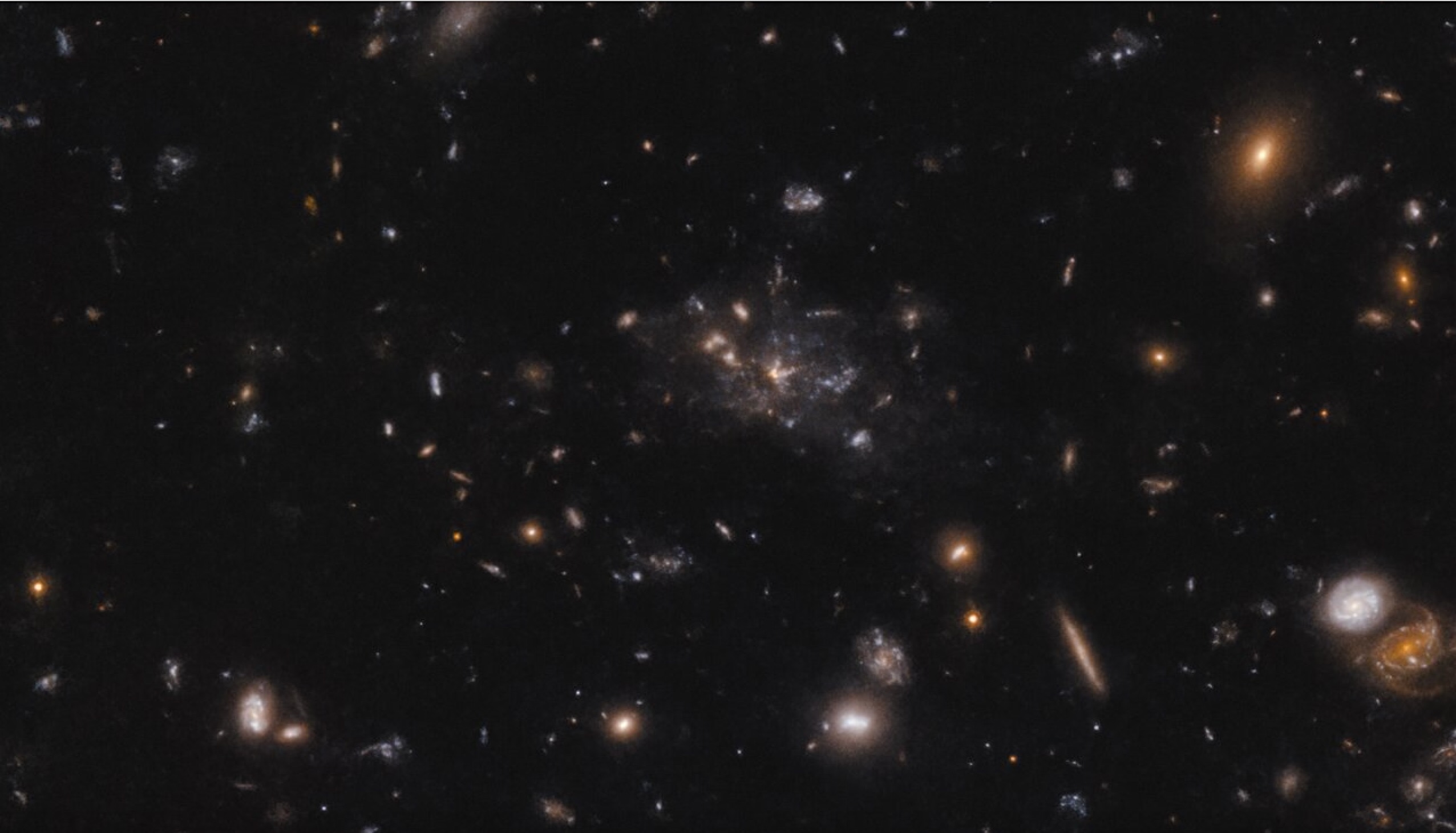
The formation of vast clouds of hot gas during the birth of a distant galaxy cluster has been observed for the very first time by astronomers using ALMA, the Atacama Large Millimeter/submillimeter Array, in Chile.
Galaxy clusters are not just associations of many galaxies; in the space between those galaxies is a fog of hot gas, radiating at millions of degrees Celsius. Astronomers refer to this gas as the intra-cluster medium (ICM), and it contains more mass than all the galaxies in the cluster. As such, it's an important component of galaxy clusters, although it is still far outweighed by the amount of invisible dark matter that they contain.
However, while astronomers have previously detected proto-clusters in the early universe, until now they have not been able to observe the ICM forming. This has now changed, thanks to ALMA's observations of a burgeoning cluster around the so-called Spiderweb Galaxy, officially known as PKS 1138-262. It's a growing, irregular galaxy with a powerful supermassive black hole active at its center.
Related: Amazing photos from the ALMA radio telescope

We see the Spiderweb as it existed 10.6 billion years ago. It is so named because it lies at the heart of a huge structure of galaxy groups trapped in a kind of cosmic gravitational spiderweb as they come together to form a baby galaxy cluster.
ALMA was able to detect the hot gas of the ICM through the Sunyaev-Zeldovich effect. The entire universe is filled with the microwave photons of the cosmic microwave background (CMB) radiation — the relic radiation of the Big Bang. When CMB photons pass through the ICM, they interact with some of the free high-energy electrons whizzing around the hot gaseous medium, and as a result the CMB photons gain some energy, shifting their microwave wavelength.
"At the right wavelengths, the Sunyaev-Zeldovich effect thus appears as a shadowing effect of a galaxy cluster on the cosmic microwave background," Luca Di Mascolo, of the University of Trieste in Italy, who led the new research, said in a statement.
By measuring these "shadows," it is possible to discern how much hot gas there is, and how it is distributed through the cluster. Di Mascolo's team calculated an ICM mass of 35 trillion times the mass of our sun. The gas is streaming into the proto-cluster along filaments in the appropriately named cosmic web of matter that spans the universe.

"Thanks to its unparalleled resolution and sensitivity, ALMA is the only facility currently capable of performing such a measurement for the distant progenitors of massive clusters," said Di Mascolo.
The measured mass of the ICM is less than previous estimates based on the spread of velocities of the galaxies in the proto-cluster. Coupled with the "shadow" from the Sunyaev-Zeldovich effect being offset from the Spiderweb Galaxy at the heart of the protocluster, it all paints a picture of a dynamic, merging system — the sculpting of what will one day grow into an immense supercluster of galaxies at least 10 times more massive than it appears to be now.
The findings were published online today (March 29) in the journal Nature.
Follow Keith Cooper on Twitter @21stCenturySETI. Follow us on Twitter @Spacedotcom or on Facebook.







